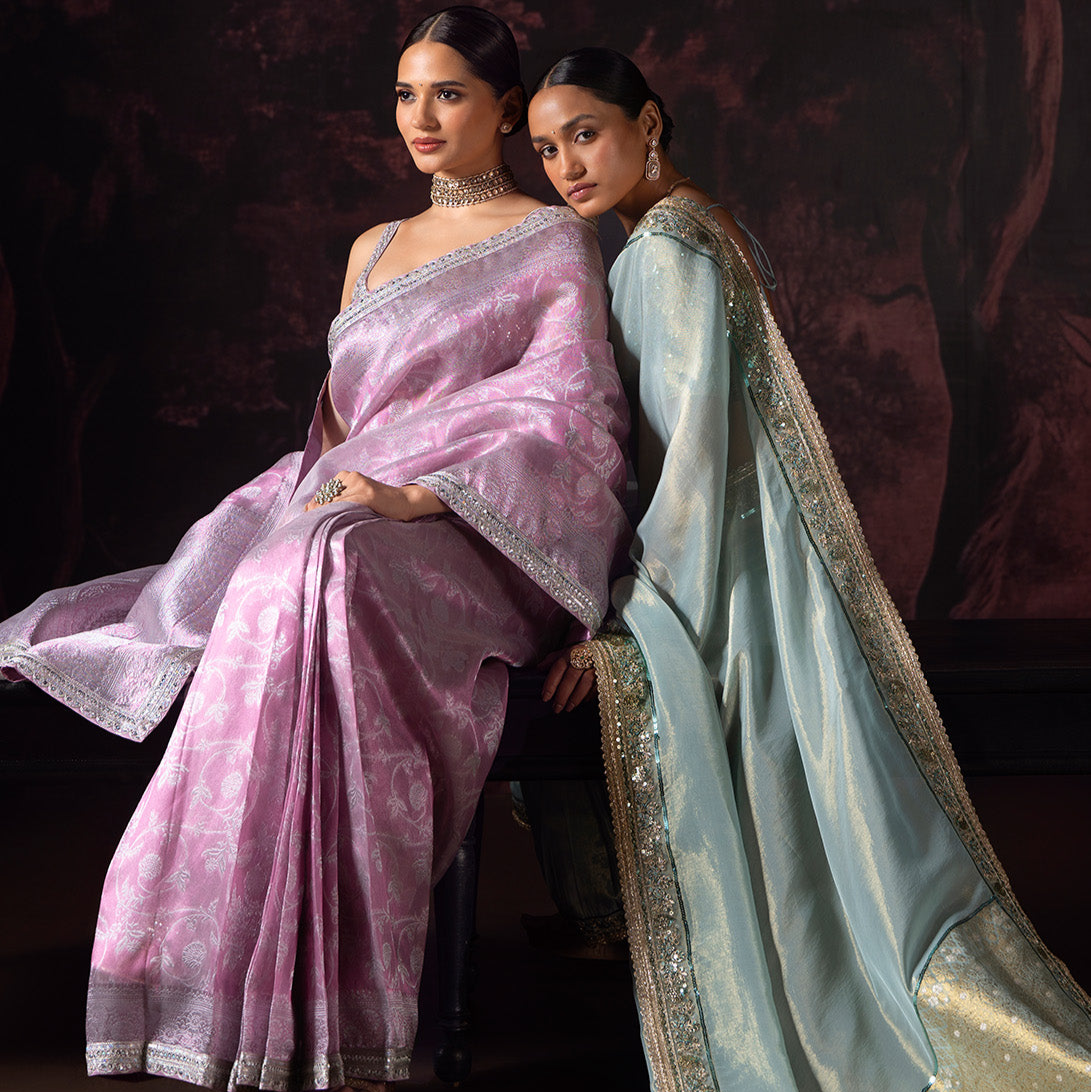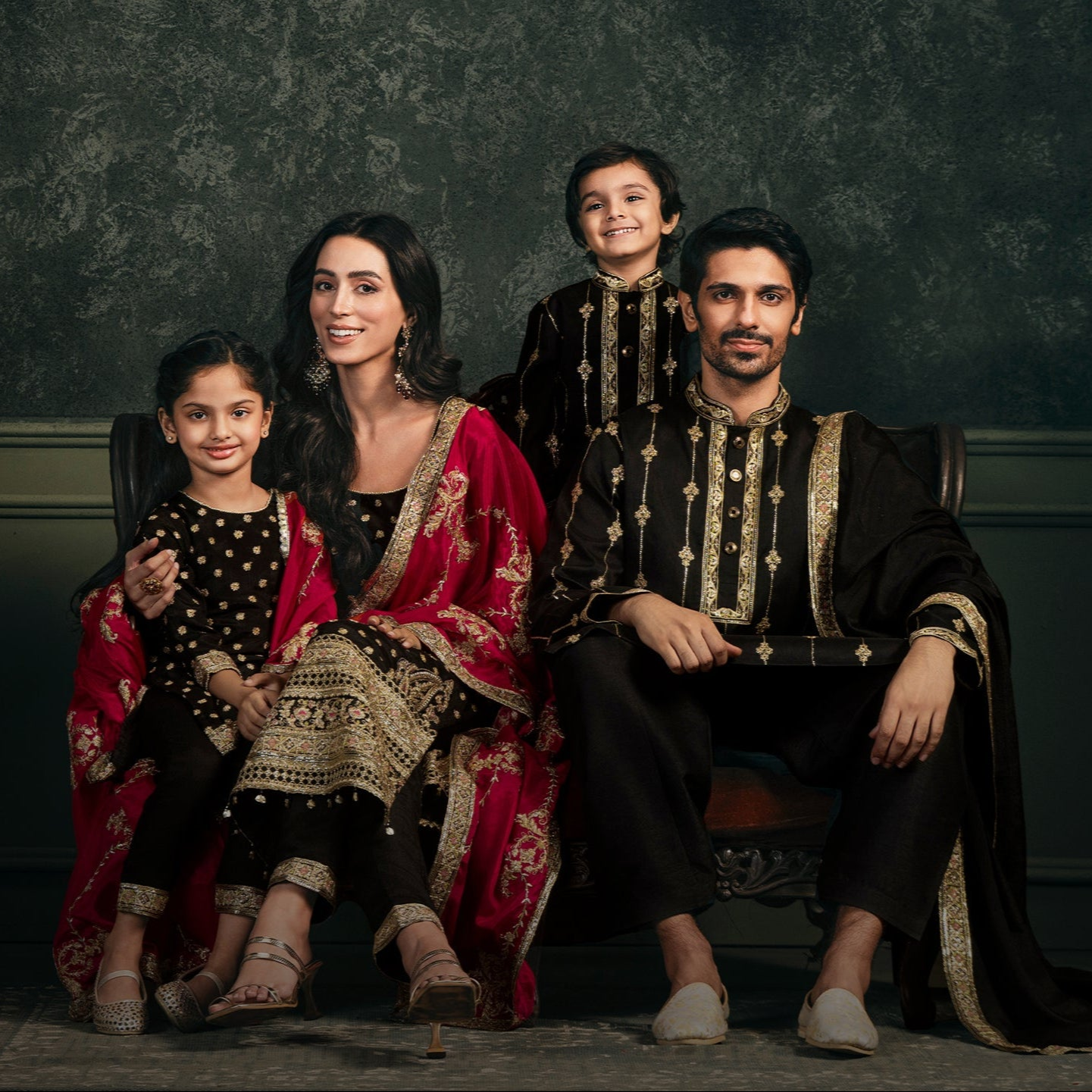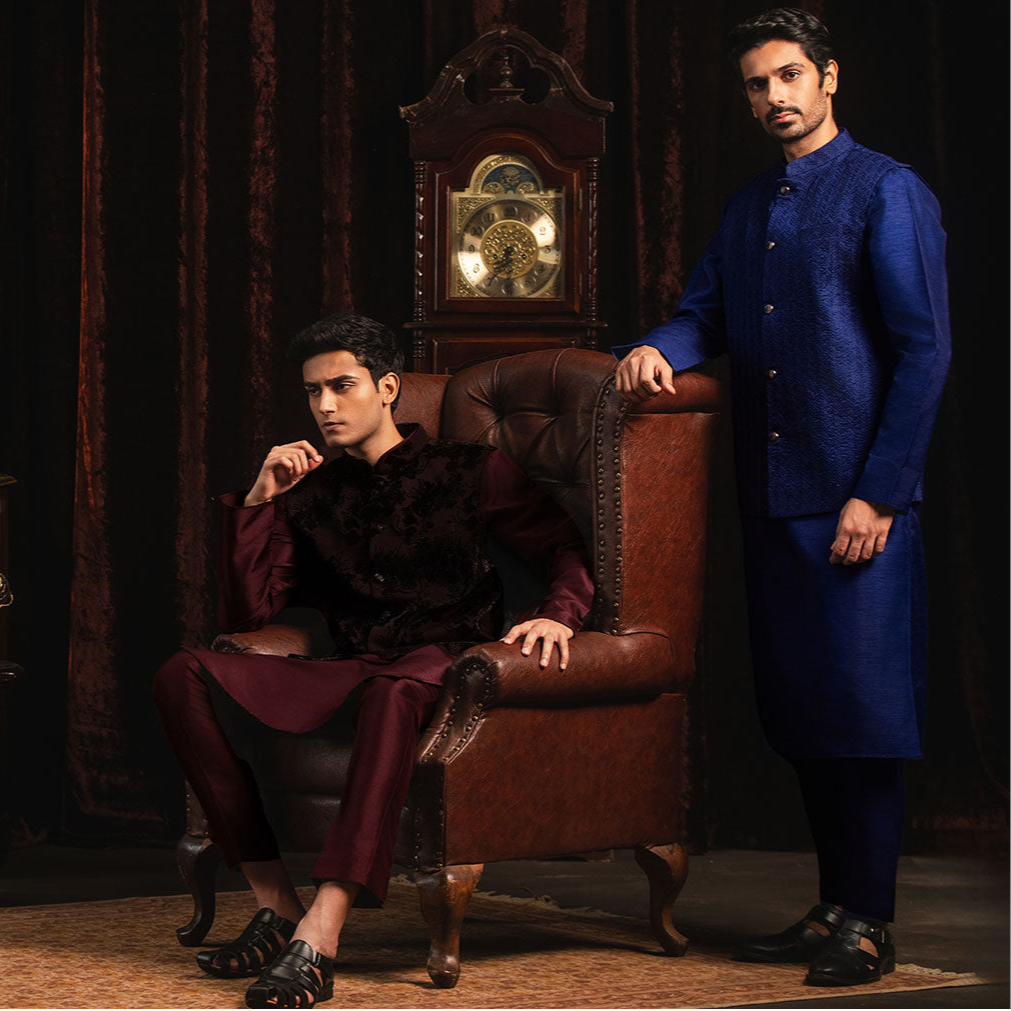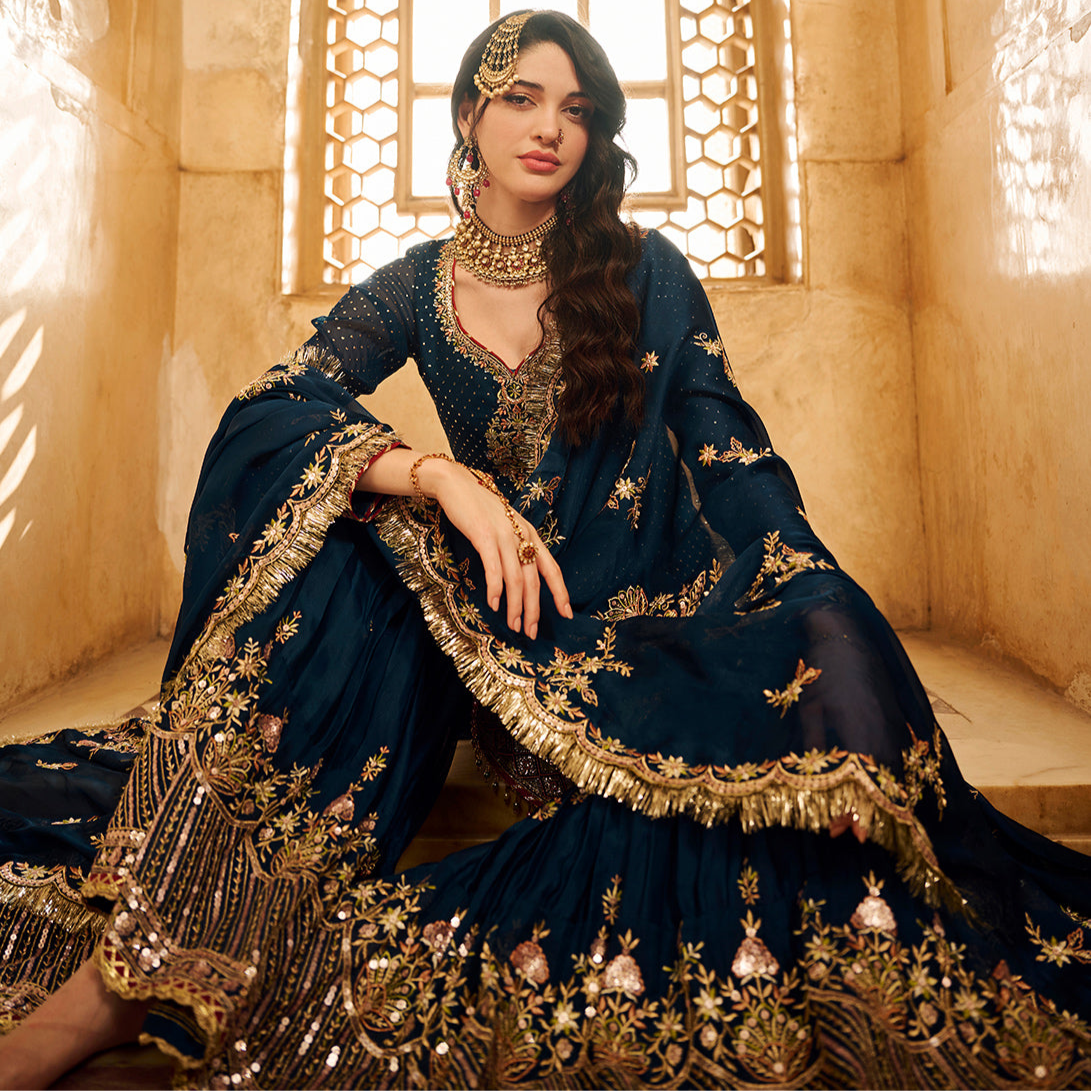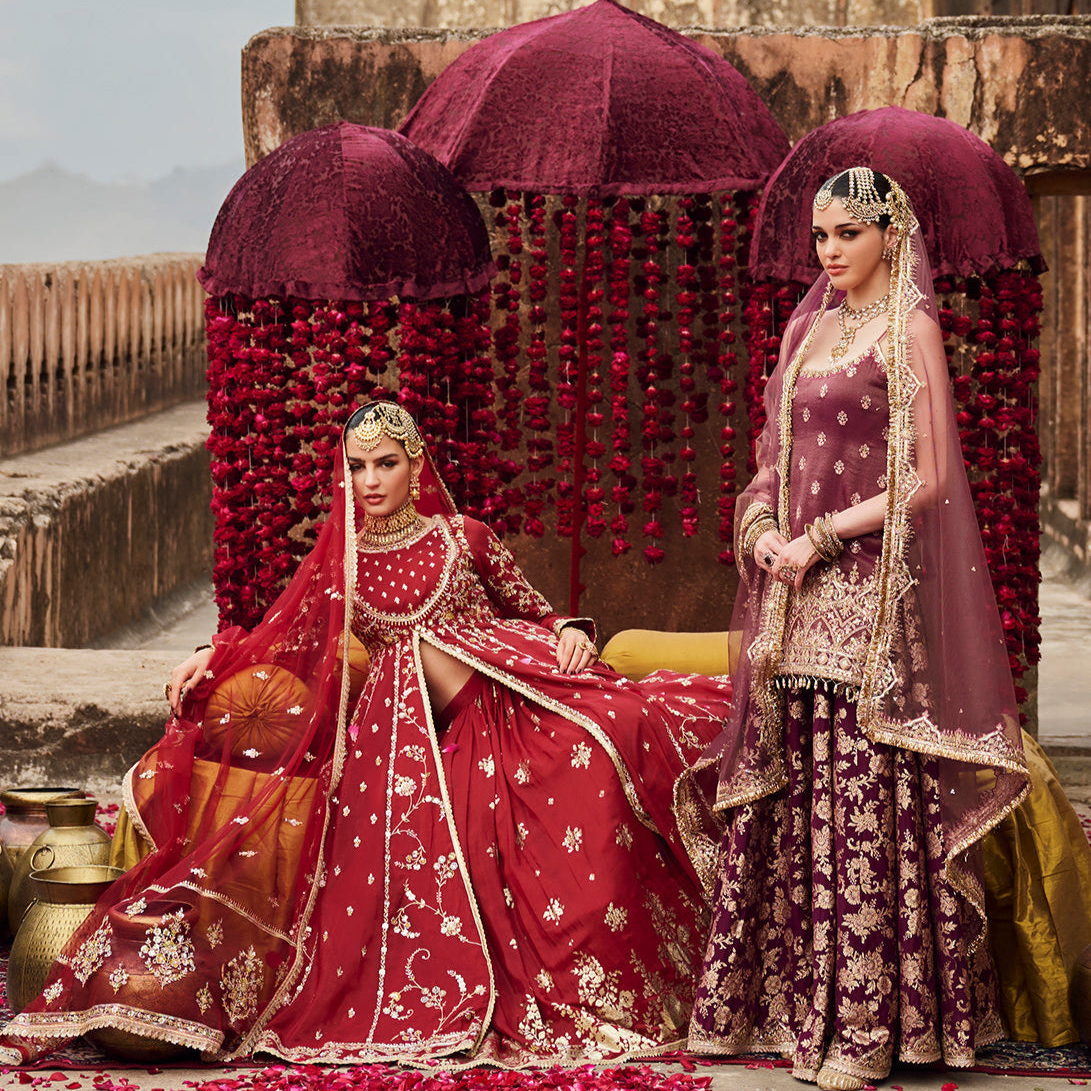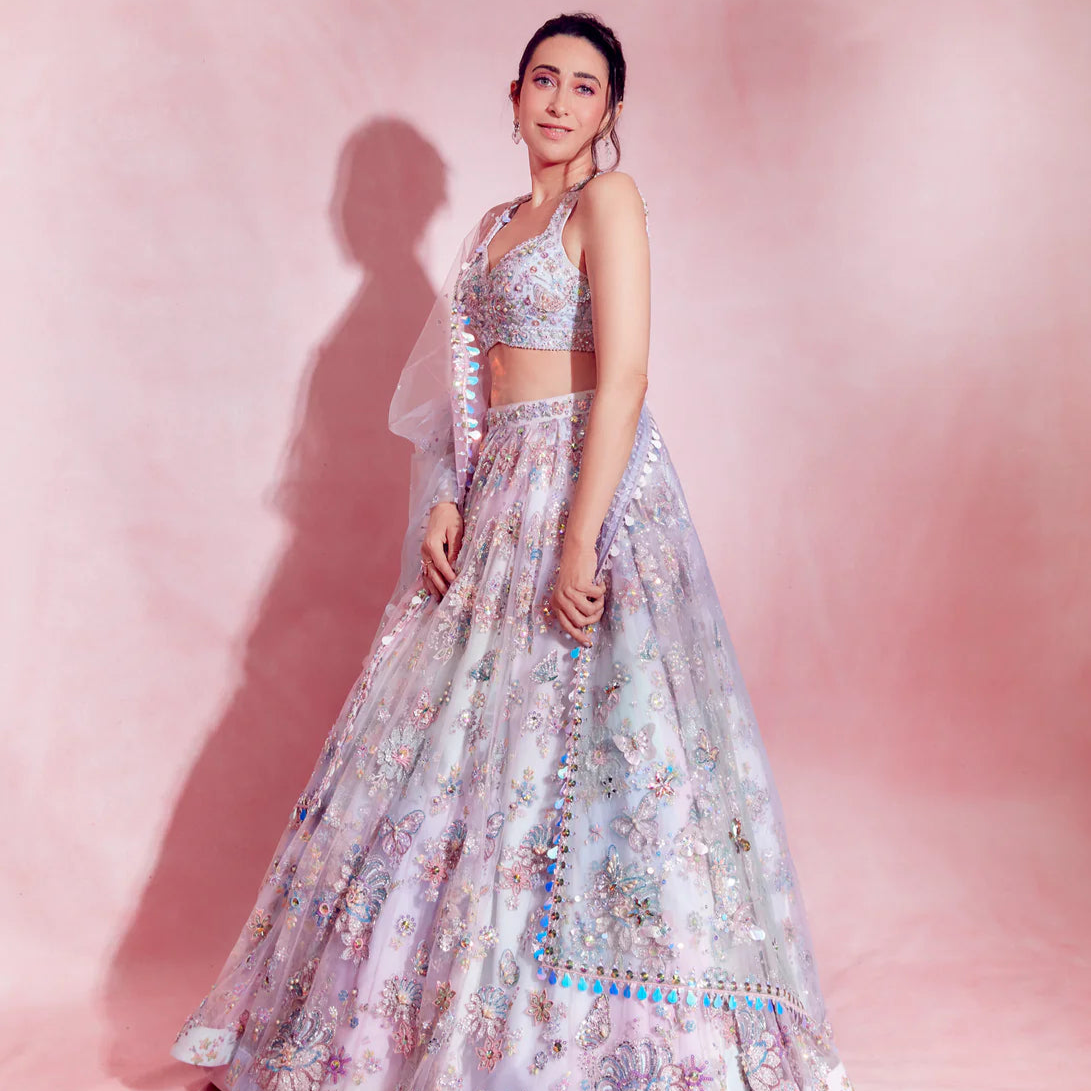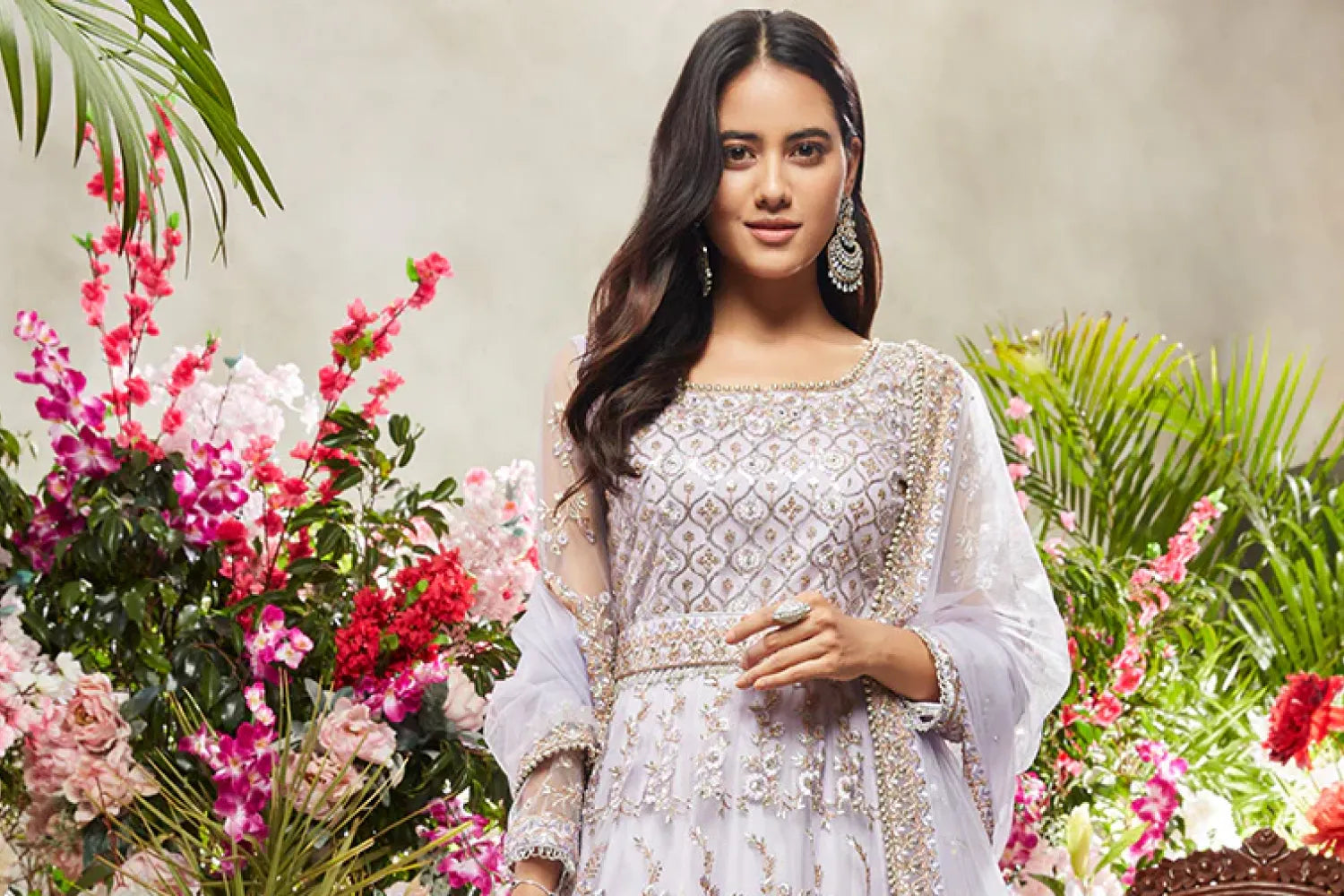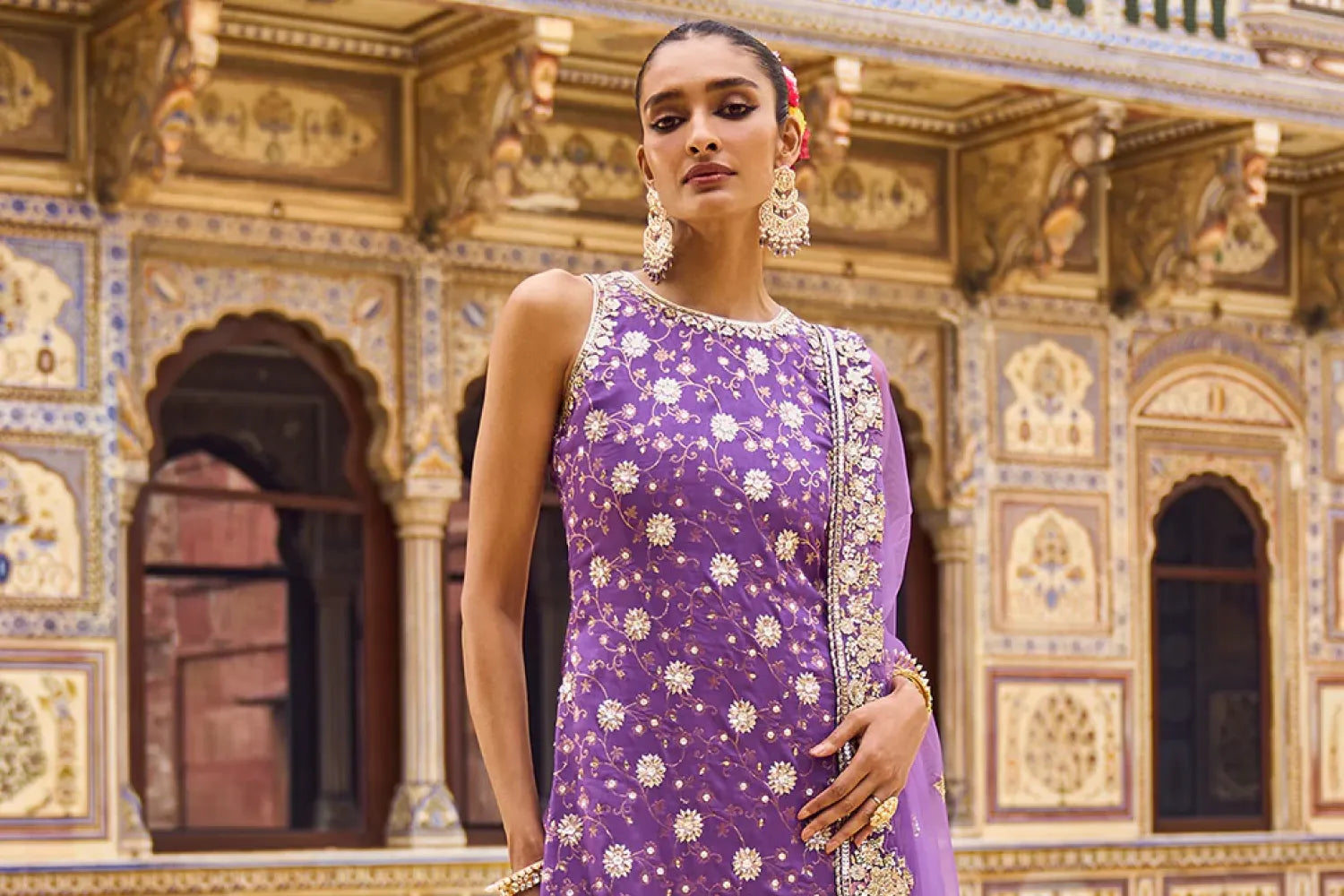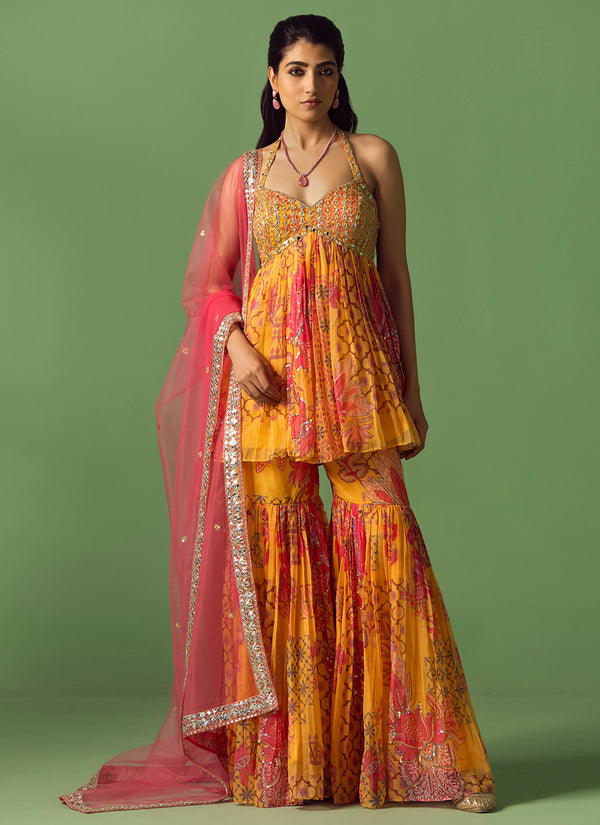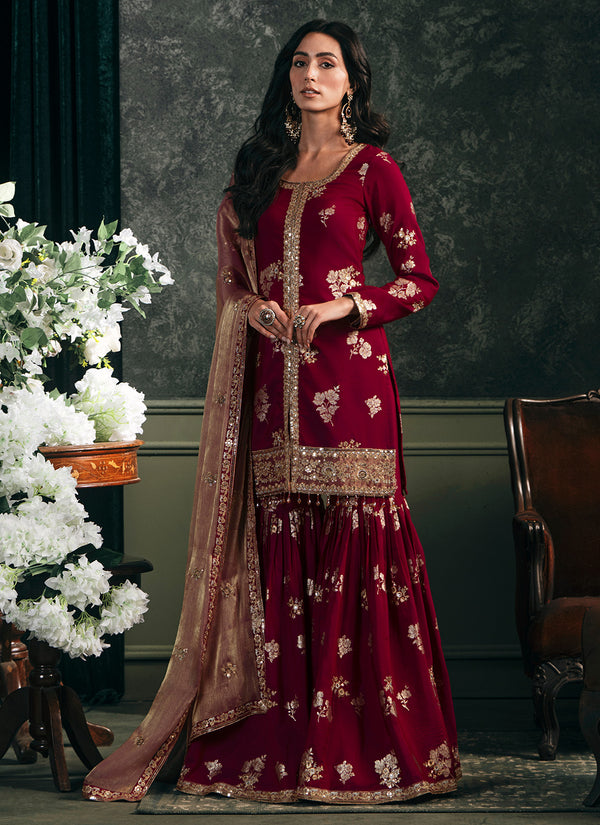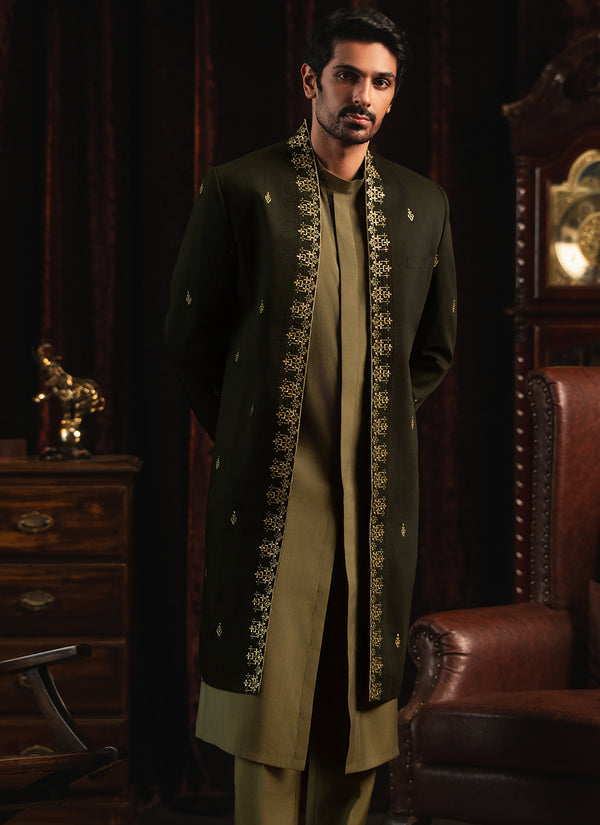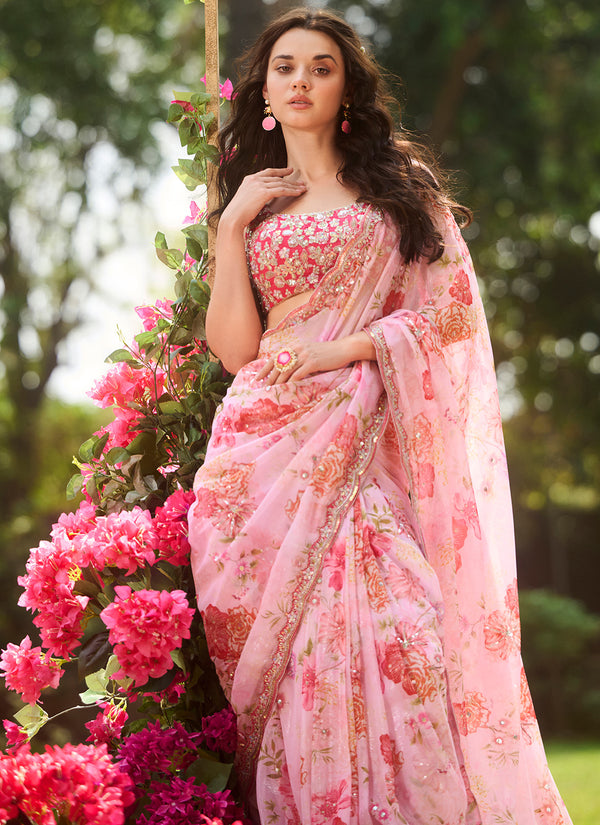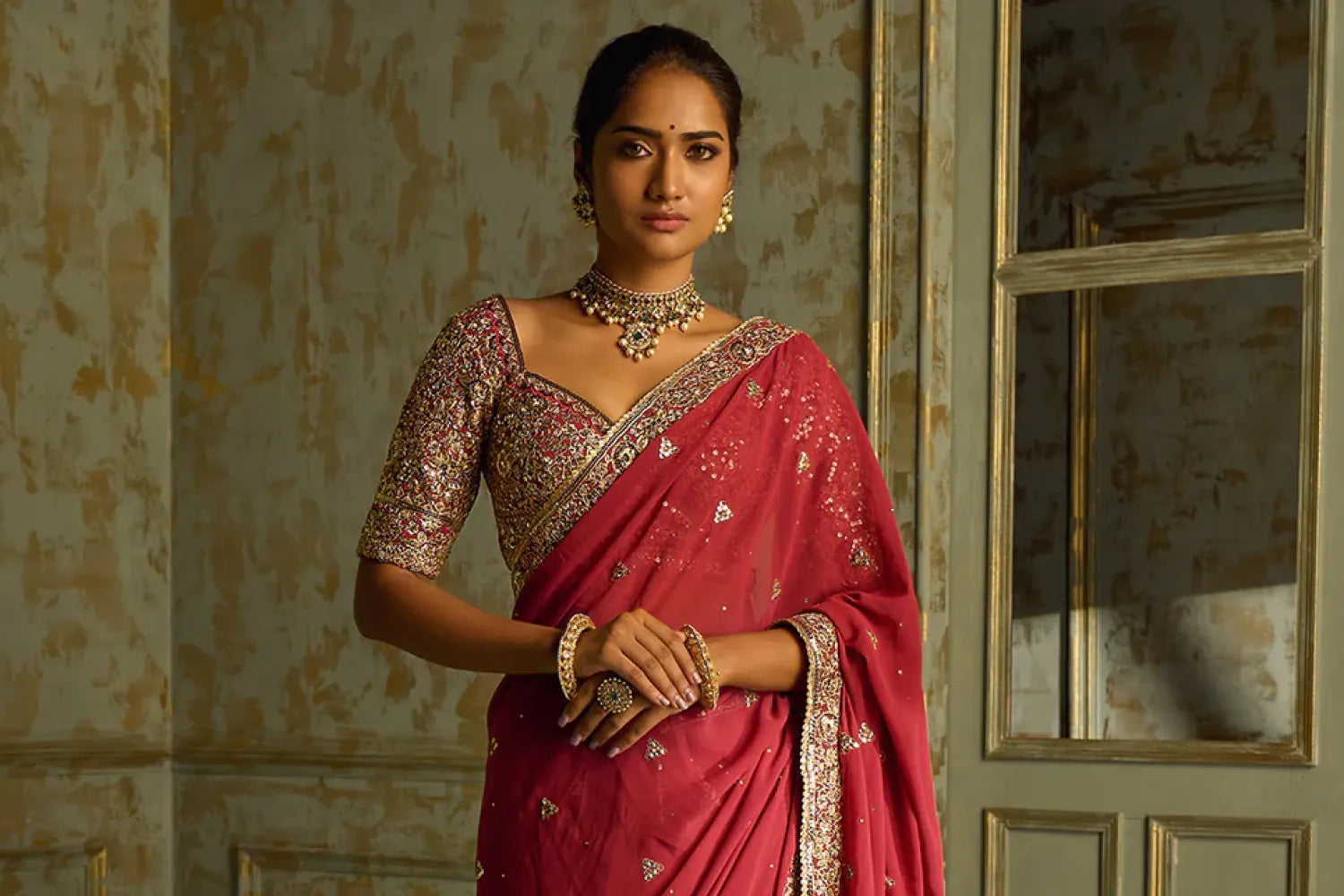
What Is A Bengali Saree & How To Wear One
Associated with the cultural heritage of Bengal, the eastern state of India, the Bengali Saree is also known as the Lal-Par saree. Originally worn by married Bengali women, the beautiful Lal-Par saree is just of two colors- red and white. While the color white signifies purity, patience, the innocence of womanhood, the red color signifies fertility, auspiciousness, new beginnings, and desirability.
It is considered an embodiment of reverence and devotion towards goddesses and is primarily worn on Mahalaya, that is seven days prior to Durga Puja to welcome the goddess and on the puja days to mark the celebrations of Sharad Navratri Puja.
In contemporary times, the Lal-Par saree is not limited to married Bengali women but has become a fashion staple during the puja times and on other celebratory occasions. The sarees have not just been restricted to being worn the traditional way but have got the touch of other styles and colors to make them sensational more than ever.
Kolkata, the cultural capital of India, is known for its exquisite red and white sarees. They come in a variety of fabrics. Jamdani Lal-Par sarees for instance have a sheer texture and intricate floral motifs, making them so special that they can be passed down to generations. Chanderi Silk sarees are the epitome of grace and luxury and these Lal-Par sarees are ideal for weddings and formal events. Another silk variation is the Tussar silk Lal-Par combination. The Bengali saree comes in a lot of variations.
The Versatility of Cotton Sarees
Cotton or Taant sarees are lightweight and comfortable. From daily wear to occasion wear, they fit every event. The red and white taant sarees are simple yet elegant, perfect for casual outings. Visit any pandal in Kolkata on the day of Durga Ashtami and you can’t help but notice most women are decked in lal-paar saree. You will also see women clad in red and white taant saree on the day of Durga Visharjan or Dashami, the last day of Durga Puja.
Cotton sarees are the best and the most convenient to travel with. They’re easy to pack, comfortable to wear, and they don't easily wrinkle. This is also why they’re the first and perhaps the only choice of lal-par sarees for dancers for their performances. Cotton sarees are relatively easy to maintain and can be hand-washed or machine-washed, making them a practical choice for daily wear too. Whether it’s a family gathering, a festive celebration, or a regular day at work, cotton sarees can be adapted to suit various occasions, making them a wardrobe staple for many women.
Exploring Handloom Sarees
Handloom sarees are a rich and diverse category of sarees that are woven using traditional hand-operated looms. Each region in India has its own unique handloom tradition, producing sarees that are distinct in terms of weave, design, and motifs. Handloom sarees’ wide variety ranges from Banarasi Sarees, Kanjivaram, Chanderi, Jamdani, Khadi and Tussar Silk, among many other varieties. Handloom sarees are known for their intricate designs and patterns, showcasing the artistic skills of the weavers. Many fabrics, traditional motifs and styles are specific to certain communities or geographical locations. Given the geographical diversity of India, different states and regions in India have their own distinct handloom traditions. When you’re looking for handloom lal-par sarees, one can look at these fabrics in addition to many others. Handloom sarees are not just garments; they are a reflection of India's rich cultural heritage and craftsmanship. The diversity in styles, motifs, and weaving techniques makes each handloom saree a unique piece of art.
Discovering Various Types of Sarees
Indian sarees come in a rich variety of styles, fabrics, and designs, each with its own cultural and regional significance. An expression of the cultures and traditions that mark the country, the elegance of a saree is unmatched and that is why all of us love this special attire. A timeless ethnic piece of clothing, different types of sarees can be found across the length and breadth of the country. The standard nine yards of drape can be modeled and styled variable depending on the different types of sarees in India. Among the abundant selection of Indian sarees, there are certain exceptional pieces that signify the rich variety. The Red and Gold Embroidered Saree, Burgundy Embroidered Velvet Saree, and Light Pink White Floral Printed Saree each represent unique aspects of this traditional dress.
Mastering the Bengali Saree Drape: A Step-by-Step Guide on How to Wear a Bengali Saree
Wearing a Bengali saree, especially in the traditional Seedha Pallu style, involves a step-by-step process. Here’s a guide on how to wear a Bengali saree:
Step 1: Gather Essential Accessories
After choosing your choice of Bengali saree, it’s time to collect the accessories you’ll need, including a well-fitted blouse, an underskirt or petticoat, bangles, a pair of comfortable heels, and safety pins.
Step 2: Wearing the Saree
Start tucking the saree into the petticoat from the right side and continue around until you reach the starting point. Make sure the lower border is at the floor level. Take about 7-8 inches of the saree fabric from the tucked portion and make neat pleats. Hold the pleats together and adjust them evenly. Place the pleats over your left shoulder. The width of the pleats depends on personal preference, but traditionally, Bengali sarees have broader pleats.
Step 3: Adjust the Pallu
Adjust the pallu (the loose end) over your left shoulder, letting it fall freely. You can pin it at the shoulder or let it drape naturally.
Step 4: Final Touches
Secure the pleats and pallu with safety pins to prevent any mishaps. Use small pins to keep the pleats in place and a larger pin to secure the pallu at the shoulder. Now, stand straight and ensure that the saree is draped evenly. Adjust any uneven pleats or the length of the saree accordingly.
Step 5: Accessorize
Complete your look with bangles, traditional jewelry, and other accessories. It might take a bit of practice, especially if you're new to wearing sarees, but with time, you'll master the art of draping with elegance.

